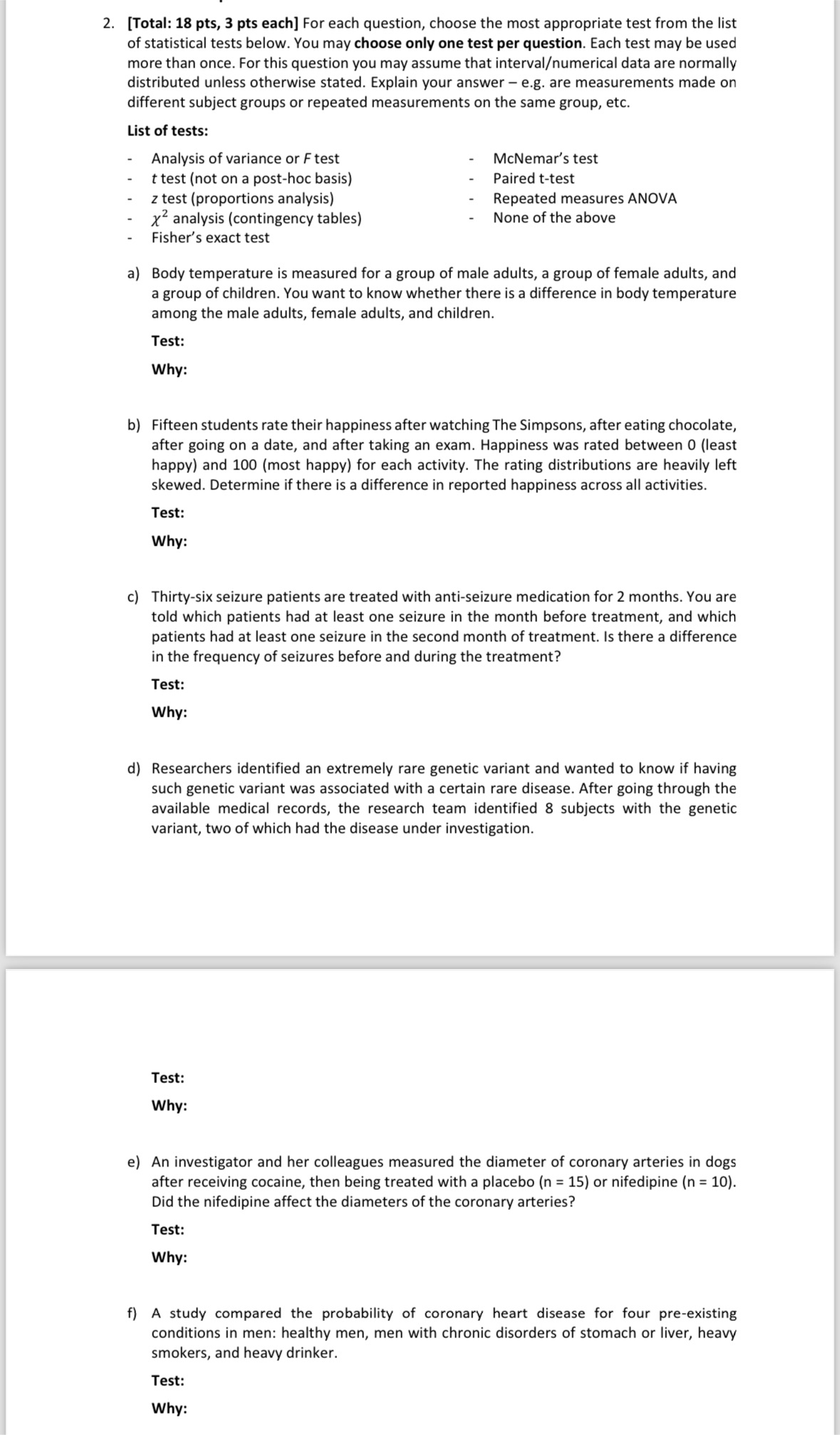[Total: 18 pts, 3 pts each] For each question, choose the most appropriate test from the list of statistical tests below. You may choose only one test per question. Each test may be used more than once. For this question you may assume that intervalumerical data are normally distributed unless otherwise stated. Explain your answer e.g. are measurements made on different subject groups or repeated measurements on the same group, etc. List of tests: - Analysis of variance or F test - McNemar's test - ttest(not on a post-hoc basis) - Paired t-test - ztest (proportions analysis) - Repeated measures ANOVA - x? analysis (contingency tables) - None of the above a) b) c) d e f) Fisher's exact test Body temperature is measured for a group of male adults, a group of female adults, and a group of children. You want to know whether there is a difference in body temperature among the male adults, female adults, and children. Test: Why: Fifteen students rate their happiness after watching The Simpsons, after eating chocolate, after going on a date, and after taking an exam. Happiness was rated between 0 (least happy) and 100 (most happy) for each activity. The rating distributions are heavily left skewed. Determine if there is a difference in reported happiness across all activities. Test: Why: Thirty-six seizure patients are treated with anti-seizure medication for 2 months. You are told which patients had at least one seizure in the month before treatment, and which patients had at least one seizure in the second month of treatment. Is there a difference in the frequency of seizures before and during the treatment? Test: Why: Researchers identified an extremely rare genetic variant and wanted to know if having such genetic variant was associated with a certain rare disease. After going through the available medical records, the research team identified 8 subjects with the genetic variant, two of which had the disease under investigation. Test: Why: An investigator and her colleagues measured the diameter of coronary arteries in dogs after receiving cocaine, then being treated with a placebo (n = 15) or nifedipine (n = 10). Did the nifedipine affect the diameters of the coronary arteries? Test: Why: A study compared the probability of coronary heart disease for four pre-existing conditions in men: healthy men, men with chronic disorders of stomach or liver, heavy smokers, and heavy drinker. Test: Why







